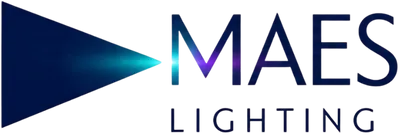
Explosion-Proof Lighting: Safety and Efficiency Guide | Maes Lighting
Explosion-proof lighting is essential for ensuring safety and efficiency in hazardous industrial environments. At Maes Lighting, our explosion-proof lighting and hazardous area lighting solutions are engineered to prevent ignition risks while delivering superior performance. This article explores the importance, features, and applications of explosion-proof lighting in 2025, highlighting why it’s a critical investment for industries like oil and gas, food processing, and mining.
What Is Explosion-Proof Lighting?
Explosion-proof lighting refers to fixtures designed to operate safely in environments with flammable gases, vapors, or combustible dust. These lights are encased in robust, sealed enclosures that contain any sparks or heat, preventing ignition in hazardous areas classified as Class I Division 1 or Class II Division 2. They comply with NFPA 70 standards and are certified by UL, ATEX, or IECEx.
Maes Lighting’s Class 1 Division 1 lighting ensures maximum safety in high-risk settings, such as chemical plants or refineries.
Key Features of Explosion-Proof Lighting
Sealed Enclosures: Prevents ignition of external hazards.
Rugged Materials: Aluminum or stainless steel for durability.
Certified Safety: Meets strict regulatory standards.
Why Explosion-Proof Lighting Matters
In hazardous locations, a single spark can lead to catastrophic explosions, endangering lives and infrastructure. Explosion-proof lighting mitigates this risk by containing potential ignition sources, ensuring compliance with OSHA’s hazardous location regulations. This protection is vital in industries like petrochemicals, where flammable vapors are prevalent, or grain handling, where combustible dust poses threats [Source: OSHA].
Beyond safety, these fixtures enhance operational reliability, reducing downtime and liability in high-stakes environments.
Safety Benefits
Risk Mitigation: Prevents explosions and fires.
Worker Protection: Enhances workplace safety.
Regulatory Compliance: Aligns with OSHA and NFPA standards.
Energy Efficiency and Cost Savings
Modern explosion-proof lighting, such as Maes Lighting’s industrial LED lighting, uses LED technology to consume up to 60% less energy than traditional HID or fluorescent lights [Source: Energy.gov]. This efficiency lowers utility costs, while lifespans of up to 100,000 hours reduce maintenance expenses in hazardous areas where servicing is risky.
Smart controls like dimming or motion sensors, available in vapor-tight LEDs, further optimize energy use, supporting EPA sustainability goals.
Cost-Saving Advantages
Lower Energy Bills: High efficiency reduces power consumption.
Reduced Maintenance: Long lifespan minimizes replacements.
Eco-Friendly: Decreases environmental impact.
Durability in Harsh Environments
Explosion-proof lighting is built to withstand extreme conditions, including moisture, corrosive chemicals, and temperature fluctuations. With IP66/IP67 ratings for water and dust resistance, these fixtures excel in challenging settings like offshore rigs or food processing plants [Source: Energy.gov]. For sanitary applications, NSF-rated lighting ensures compliance with FDA food safety standards.
Maes Lighting’s explosion-proof LEDs are constructed with durable materials to ensure long-term reliability.
Durability Highlights
Weather Resistance: Performs in wet, dusty, or extreme conditions.
Corrosion Protection: Resists chemicals and saltwater.
Impact Resistance: Built for high-traffic industrial areas.
Versatile Applications Across Industries
Explosion-proof lighting serves a wide range of hazardous environments. In oil and gas, it illuminates refineries and drilling platforms safely. In food processing, NSF-rated explosion-proof lights combine hygiene with hazard protection. In mining or grain silos, they safeguard against combustible dust [Source: OSHA].
Maes Lighting’s explosion-proof lighting offers flexible solutions, from high-bay fixtures for large spaces to portable options like the EX-MV01 for temporary work in hazardous zones.
Key Applications
Oil and Gas: Safe lighting for flammable vapor zones.
Food Processing: Hygienic and explosion-safe illumination.
Mining: Protection against dust-related hazards.
Installation and Maintenance Best Practices
Proper installation by certified electricians is crucial to maintain the integrity of explosion-proof lighting, following NFPA 70 guidelines. Maes Lighting’s fixtures are designed for easy setup and minimal maintenance, reducing worker exposure to hazardous areas.
Regular inspections ensure seals and enclosures remain intact, preserving safety and performance over time.
Installation Tips
Professional Setup: Ensures compliance and safety.
Routine Inspections: Maintains enclosure integrity.
User-Friendly Design: Simplifies maintenance tasks.
Conclusion
Explosion-proof lighting is a cornerstone of safety and efficiency in hazardous industrial settings. Maes Lighting’s explosion-proof lighting and hazardous area lighting solutions deliver durability, energy savings, and compliance. Explore our full LED lighting portfolio to protect and illuminate your facility in 2025.



